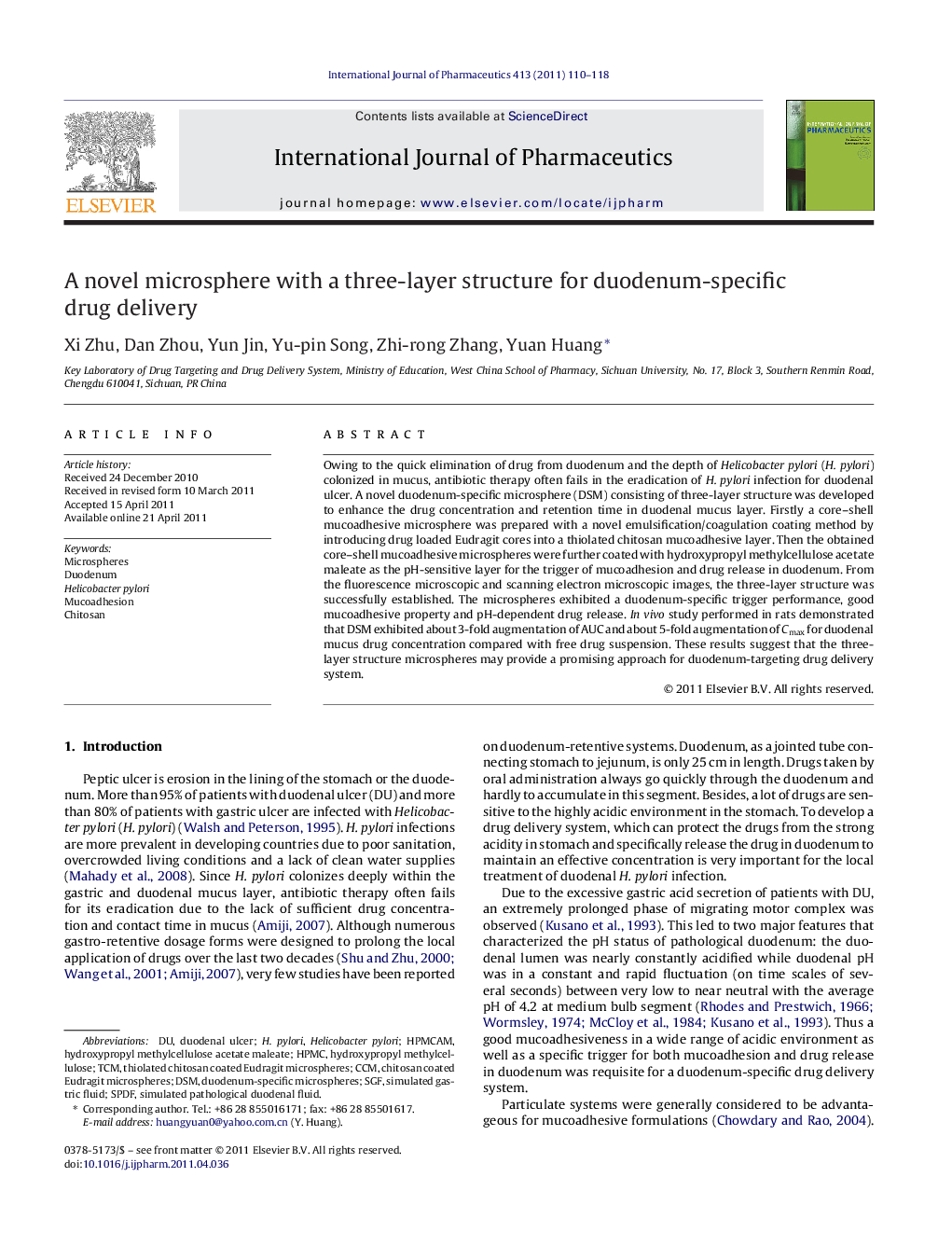| Article ID | Journal | Published Year | Pages | File Type |
|---|---|---|---|---|
| 2503223 | International Journal of Pharmaceutics | 2011 | 9 Pages |
Owing to the quick elimination of drug from duodenum and the depth of Helicobacter pylori (H. pylori) colonized in mucus, antibiotic therapy often fails in the eradication of H. pylori infection for duodenal ulcer. A novel duodenum-specific microsphere (DSM) consisting of three-layer structure was developed to enhance the drug concentration and retention time in duodenal mucus layer. Firstly a core–shell mucoadhesive microsphere was prepared with a novel emulsification/coagulation coating method by introducing drug loaded Eudragit cores into a thiolated chitosan mucoadhesive layer. Then the obtained core–shell mucoadhesive microspheres were further coated with hydroxypropyl methylcellulose acetate maleate as the pH-sensitive layer for the trigger of mucoadhesion and drug release in duodenum. From the fluorescence microscopic and scanning electron microscopic images, the three-layer structure was successfully established. The microspheres exhibited a duodenum-specific trigger performance, good mucoadhesive property and pH-dependent drug release. In vivo study performed in rats demonstrated that DSM exhibited about 3-fold augmentation of AUC and about 5-fold augmentation of Cmax for duodenal mucus drug concentration compared with free drug suspension. These results suggest that the three-layer structure microspheres may provide a promising approach for duodenum-targeting drug delivery system.
Graphical abstractFigure optionsDownload full-size imageDownload as PowerPoint slide
